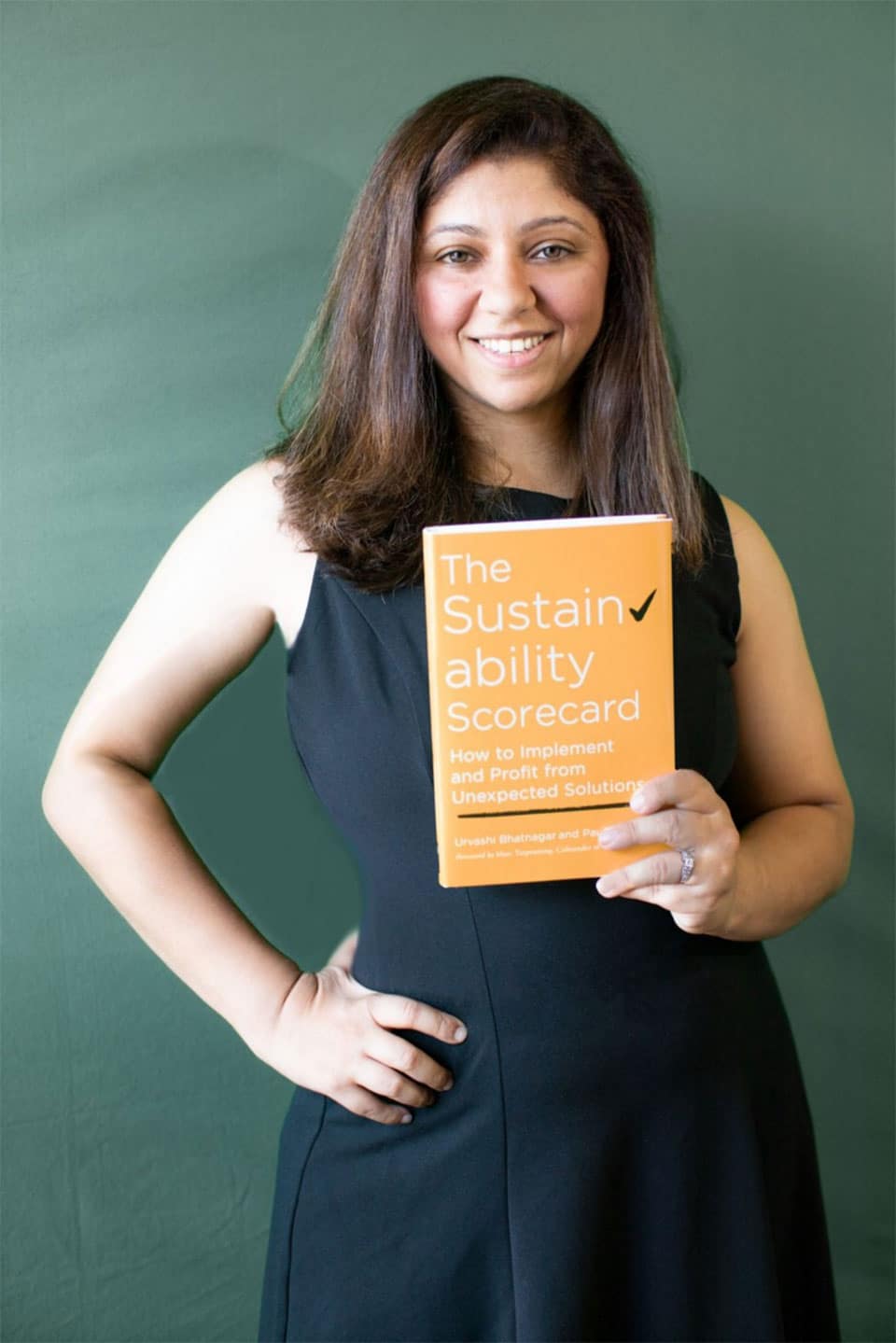The Sustainability Scorecard: How to implement and profit from unexpected solutions

It ain’t what we know that gets us in trouble, it’s what we know for sure that just ain’t so – Mark Twain
The way we do things today will eventually be different than how we do them twenty, fifty or even one-hundred years from now. While investors and stakeholders place ESG reporting expectations on firms, visionary Chief Executive Officers are leveraging ESG to propel their firms into the future. These are the leaders steering multinational operations and supply chains to design firms for a future circular economy.
Doing things better is not the same thing as doing better things
Economist Herbert Simon once said, “An efficient individual is someone that attempts rationally to maximize the attainment of certain ends with the use of scarce means.” By that definition, our everyday lives are littered with examples of “efficiency gone awry” like solar/ photovoltaic cells, pesticides, gold mining, fracking, supply chain redundancies, and industrial farming.
When most of the products we use today were first conceived, in many cases over one hundred years ago, we had little knowledge of what their environmental impact would be. Today, our interconnected and global supply chains are more advanced than ever with machine learning models providing firms with predictive analytics on supply and demand. Meanwhile, global supply chains face disruption with the rise of political unrest due to this competition for resources as well the increased frequency of extreme weather. With embedded capital in existing systems and leading firms ill equipped to navigate these environmental threats, we realize now, that a few things are for certain.
To continue to accept these realities is absurdity.
To not do anything about them is obscenity.
To not profit from the unexpected solutions that sustainability offers would be humankind’s greatest missed opportunity.
The Sustainability Scorecard and the Unexpected Solutions It Offers
Before plunging into design solutions for the future, it helps to understand what we’re designing for. What do we want the next 50-100 years to look like?
The status quo tells us that sustainability comes at a compromise for quality or efficacy, ultimately costing more for a poorer experience. In our vision for the future, sustainably designed products actually perform better than unsustainable ones, with increased efficiency and quality.
We must redesign our products and processes to be environmentally benign and non-toxic. Anything less is neither efficient nor profitable over the long term. In other words, it’s unsustainable—financially and otherwise.
In other words, economic activity of every kind must be designed to encompass the Four Principles for Managing and Scaling Sustainability:
- Prevention of waste
- Maximization of efficiency and performance
- Renewability of inputs
- Safe degradation
These principles act as design constraints, elements that must be embedded in the product or process—and that is what yields unexpected solutions, sometimes even breakthrough innovations, like the world’s first carbon-negative vodka created from carbon dioxide in thin air. In fact, the most compelling argument for including sustainability into an enterprise-wide corporate strategy might just be capitalizing on the unexpected value that traditional business practices leave on the table.
The Sustainability Scorecard—this book and the metrics—are about how to do better things (i.e. sustainability) better (i.e. profitably). In this book, we explore sustainable product design and scaling green innovations profitably through reducing operating costs, expanding market share, new service lines, and our main focus area: transforming supply chain and sourcing models to drive the most consistent and highest long-term value. We will show you not only that it can be done but that it’s already being done by leading-edge firms all over the world! Through our deep dive into unexpected solutions , we will show you how you can use our repeatable, data-driven framework to integrate sustainability into your overall corporate strategy—and to profit from it.
There are several scorecards out there that approach climate change economics/ business decision making, however, none of them are driven off science. The Sustainability Scorecard is the first scientifically rooted, data driven methodology for strategic, sustainable transformation. It guides organizations in designing a future that is healthful, circular (i.e., restorative and replenishing by design), and effective in leveraging climate economics—what we see as the greatest business opportunity of our times.
No, firms don’t use toxic materials just because they are much cheaper than harmless ones and no, green products don’t need to cost more for a poorer experience. This is simply the flawed thinking that has led to the flawed design of our present. The gaps in current tools today related to supply chain transparency, understanding the effect of renewables not only on emissions but product design and end of life, and factoring in product performance in a triple bottom line fashion, is exactly where our scorecard fits in. These scientific categories differentiate our scorecard from others, right at the outset. We focus on waste prevention (wherein we recommend a proactive assessment of future waste conducted in the design phase), the maximizing of efficiency and performance (with an expanded definition of performance where social and environmental considerations are tracked), renewability of resources (where we place a focus on supply chain inputs and thereby, inherited inputs), and safe degradation (where we attempt to design a safe and benign afterlife for products and processes).
Each part of this scorecard has its own legend; however we will describe this in much more in a separate chapter.
We understand that innovation in large firms looks different from more nimble startups that are able to pivot their strategies and products based on demand and more immediately capture value. And while large firms have several advantages for scaling innovation, they face the challenge of embedded capital (financial and human) in established processes. That’s why we devoted a chapter to the ways in which larger organizations can kickstart their sustainability journeys, including launching pilot programs and using drop-in replacements, before scaling across service lines using the Sustainability Scorecard metrics.
For smaller firms, start-ups, and investors looking for their next big bets, we identify the emerging sustainable technologies that we expect to be commercialized and scaled in the next 50 to 100 years. Firms and investors can leverage the Sustainability Scorecard to assess these technologies, including whether the new solution prevents waste, is maximally efficient and performative, uses inputs that are renewable, and degrades safely, in order to understand its true value proposition.
Our promise to you
In this book, we present you with the details for how to assess, implement, and scale unexpected solutions in an effort to maximize your financial, environmental and social bottom lines.
We identify inherently sustainable solutions that actually move the needle with respect to financial, environmental, and social factors. We provide a framework for your firm to identify truly innovative, inherently sustainable products vs. “less bad” products and processes that may not provide the exponential value that breakthrough products can.
The Sustainability Scorecard was written for operations and strategy executives who love the idea and value proposition of sustainability but don’t feel like they have the bandwidth to implement and scale these changes at their firms. You do—one step at a time. This is how the Sustainability Scorecard solves one of the biggest challenges for firms: How to keep on operating with cost consciousness while investing in the future. Start with using the scorecard to identify and initiate small transformations in your operations then use it to guide future decisions and strategies to keep your firm moving in the direction of ever-increasing sustainability—and toward unexpectedly innovative and valuable solutions.
Written by Urvashi Bhatnagar.
Have you read?
These are the countries with the Highest Average Salaries, 2022.
International Financial Centers Ranking, 2022.
Creating a Podcast? Here’s How to Generate Hype and Build an Audience Before Your First Show Goes Live by Eric Weinberger.
7 Strategies for Improving Team Efficiency and Getting Results by Dr. John Ma.
5 Qualities Found in Effective Teachers by Robert Goetschkes.
Tips for Becoming a Better Communicator and Building Connections with Colleagues by Kathryn Trammel.
Add CEOWORLD magazine to your Google News feed.
Follow CEOWORLD magazine headlines on: Google News, LinkedIn, Twitter, and Facebook.
Copyright 2024 The CEOWORLD magazine. All rights reserved. This material (and any extract from it) must not be copied, redistributed or placed on any website, without CEOWORLD magazine' prior written consent. For media queries, please contact: info@ceoworld.biz









